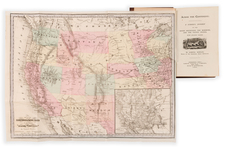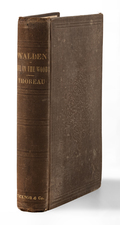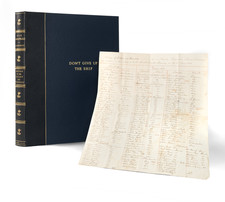"... the first edition contained Newton's first mathematical papers in print (the dispute with Leibniz (160) had already begun)." - PMM
"Newton's Opticks did for light what his Principia had done for gravitation, namely, placed it on a scientific basis" - Babson, page 66
London: Printed for Sam. Smith, and Benj. Walford, 1704.
First Edition, First Issue.
Newton delayed publication of Opticks until after the death of Robert Hooke, president of the Royal Society, in 1703. Hooke had controversially accused Newton of plagiarism in 1686, following his presentation of Principia to the Royal Society, claiming Newton had taken the idea of the law of universal gravitation from him.
The publication of Newton's Opticks marked a pivotal moment in the study of optics and light. Within its pages, Newton revolutionized the understanding of light and color through rigorous experimentation and observation. His groundbreaking experiments with prisms led to the discovery that white light is composed of a spectrum of colors. Newton introduced the corpuscular theory of light, proposing that light consists of tiny particles, or "corpuscles," rather than waves. He also explored the phenomena of refraction, diffraction, and the nature of color, laying the foundation for modern optics. Opticks represents a cornerstone of scientific inquiry, offering profound insights into the fundamental nature of light and shaping the course of optical research for centuries to come. This edition, compiled from Newton's original writings and experiments, serves as a testament to his enduring legacy as one of the greatest minds in the history of science.
Issue points
No author name, but Advertisement signed with initials "I.N." (pi2v).
Book Three has 16 questions
With mathematical tracts ("Enumeratio Linearum Tertii Ordinis" and "Tractatus de Quadratura Curvarum")
Collation: pi2, A-S4, (5 folding plates), Aa-Bb4, Dd-Gg4 (4 folding plates), Hh-Pp4 (2 folding plates) Qq-Ss4, T1 (folding plate), [?], T2-T4-Ddd4, E2, (7 folding plates)












![The Minnesota Handbook, for 1856-7 [with] Minnesota Published by J.H. Colton & Co... 1857.](https://storage.googleapis.com/raremaps/img/small/88811.jpg)

![[Jefferson's Notes on the State of Virginia] Observations sur la Virginie [with the map:] A Map of the country between Albemarle Sound, and Lake Erie, comprehending the whole of Virginia, Maryland, Delaware, and Pensylvania, with parts of several other of the United States of America. Engraved for the Notes on Virginia.](https://storage.googleapis.com/raremaps/img/small/51828.jpg)